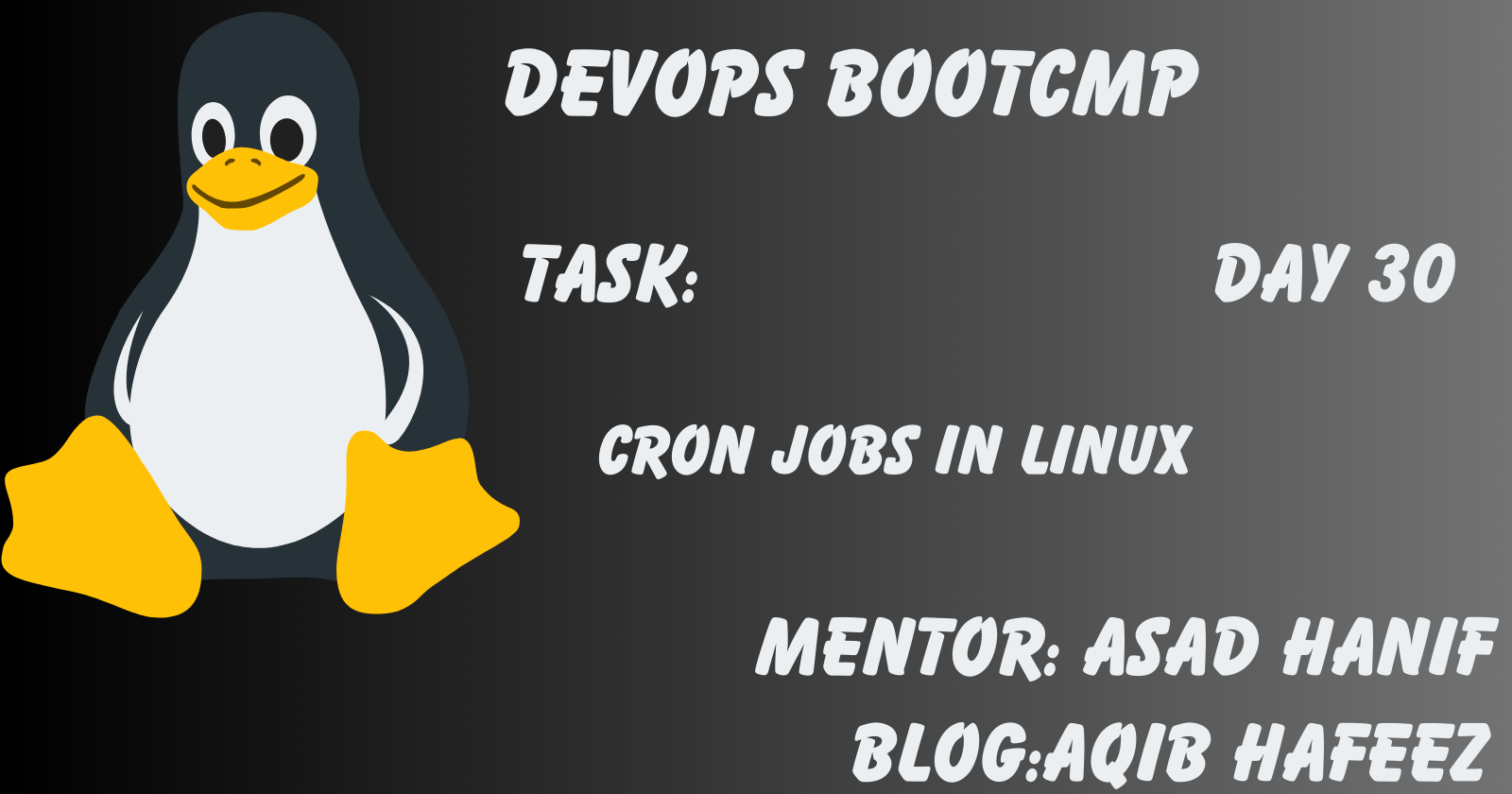Day 30 | Cron Jobs: Job Scheduling | DevOps Bootcamp | 180 Days challenge
 AQIB HAFEEZ
AQIB HAFEEZ
Introduction:
Introduction: Cron jobs are an essential feature of Linux that enable automated task scheduling. In this tutorial, we'll guide you through creating and managing cron jobs step by step.
Step 1: Access the Crontab File
To begin, open the crontab file for editing using the command:
crontab -e
This command opens the crontab file in your default text editor.
Step 2: Understand the Crontab Syntax
Before creating a cron job, it's crucial to understand the crontab syntax, which consists of five fields:
Minute (0-59)
Hour (0-23)
Day of the month (1-31)
Month (1-12)
Day of the week (0-7, where both 0 and 7 represent Sunday)
Step 3: Create a Simple Cron Job
Let's schedule a simple cron job to run a script every day at a specific time. For example, to run a script at 2:30 PM daily, add the following line to your crontab file:
30 14 * * * /path/to/your/script.sh
Here's a breakdown of the fields:
30: The minute field (runs at the 30th minute).14: The hour field (runs at the 14th hour, i.e., 2 PM).*: Wildcard for day of the month (every day).*: Wildcard for the month (every month).*: Wildcard for the day of the week (every day of the week).
Step 4: Save and Exit
After adding the cron job, save and exit the crontab file. In most text editors, you can do this by pressing Ctrl + X, followed by Y to confirm the changes and Enter to save the file.
Step 5: Verify Your Cron Job
You can verify that the cron job has been successfully added by listing your active crontab entries:
crontab -l
This command will display all the cron jobs currently configured in your crontab file.
Step 6: Monitoring Cron Job Output
To monitor the output of your cron job, consider redirecting it to a log file. Modify your cron job entry like this:
30 14 * * * /path/to/your/script.sh >> /path/to/your/logfile.log 2>&1
This appends the output to a log file, making it easier to troubleshoot any issues.
Reference
:https://youtube.com/playlist?list=PLg6orTBNhcmcSPQA0rbs_p1dSvLkw4J2q&si=saT3g7gtnjDH3EBF
Subscribe to my newsletter
Read articles from AQIB HAFEEZ directly inside your inbox. Subscribe to the newsletter, and don't miss out.
Written by

AQIB HAFEEZ
AQIB HAFEEZ
DevOps Engineer, Linux, Git, GitHub, GitLab, CI/CD pipelines, Jenkins, Docker, Kubernetes, Ansible & AWS. Practical experience in these DevOps tools enhances my passion for streamlined workflows, automated processes, and holistic development solutions. Proficient in digital and Facebook marketing, aiming to merge technical acumen with marketing finesse.